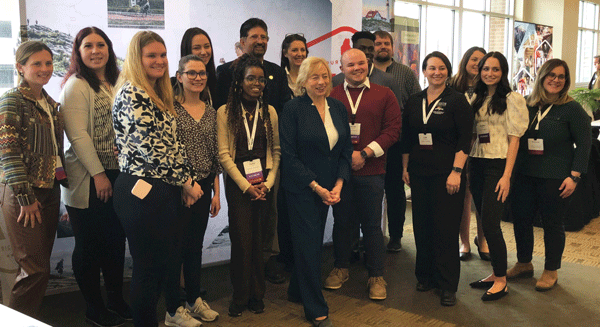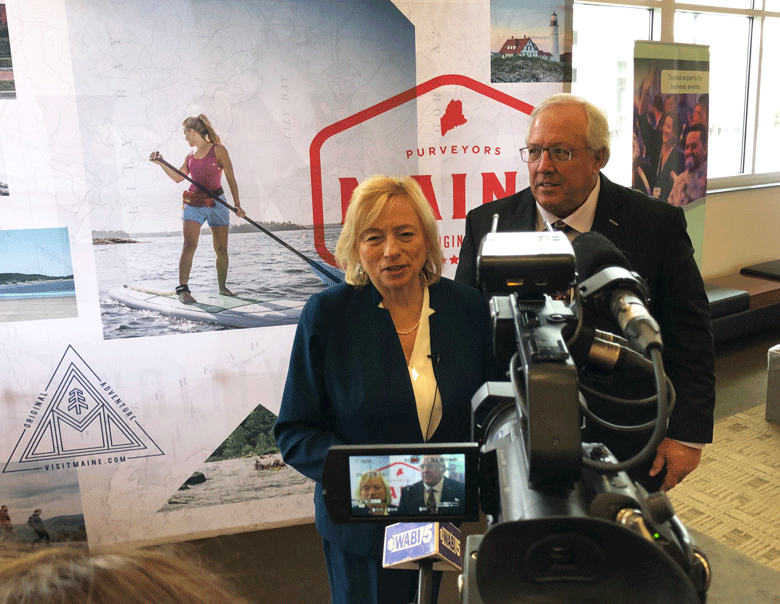Maine’s tourism economy rarely seems to enjoy a normal year. Factors such as fluctuating gas prices and airline fares, terrorist attacks, and pandemics play their part in either inflating or deflating visitation.
But despite these variables, the numbers make the case that tourism remains a major economic sector in the state. Beyond spending by visitors, tourism officials are now drawing links between those visiting and other economic challenges, such as an aging population and shrinking work force, with the tourism draw holding potential to ease those demographic burdens.
At the annual Governor’s Tourism Conference in Bangor on March 28, officials reported that visitation in 2022 was down slightly from the previous year—from 15.6 million to 15.3 million. But spending was up, from $7.8 billion to $8.4 billion, no doubt tied to broad inflation.
That typical visitor is a college graduate (77%), married or in a domestic partnership (76%), and has an annual household income of $89,100.
That spending supports 151,000 jobs, officials said, contributing $5.6 billion in earnings to Maine households. Restaurant and lodging taxes paid by tourists reduced the tax burden to Maine households by $2,172.
Given the variables in a very competitive environment, the Maine Office of Tourism works on adjusting its marketing strategies to match ever-changing trends. One constant buoying Maine’s tourism is the rate at which visitors return.
“Their interest in coming back is significantly higher than in other regions,” said Heather Johnson, commissioner of the state’s Department of Economic and Community Development, which includes the Maine Office of Tourism. Research showed that last year, 32% of visitors had been to Maine more than ten times, and 91% surveyed in 2022 said they would return.
Johnson suggested tourism might be linked to the state’s recent in-migration rate, which was higher last year than any of the other New England states and seventh-highest in the U.S.
With a statewide unemployment rate of just 2.8%, Johnson said, attracting visitors who might become residents is critical to keeping the economy humming.
A couple of themes emerging in the data presented about the industry were the need to appeal to a more diverse population, and that key draws are Maine’s status as a safe, low-crime state with charming downtowns.
“People feel safe to come here and find their futures here,” Johnson said.
How people travel is evolving, she added, and the state’s 2023 tourism marketing plan reflected those changes by adding technical assistance for businesses.
Steve Lyons, director of the Maine Office of Tourism, described 2022 as “a good year,” but a year of transition as the state moved past the COVID pandemic.
In her remarks, Gov. Janet Mills praised the industry—about 350 attended the conference at the Cross Insurance Center—for working to maintain the state’s status as a destination.
“You all worked hard to protect Maine’s reputation as a state to visit,” she said. “You are the face of Maine, making people fall in love with Vacationland.”
Some 47% of visitors surveyed said they noticed the office’s paid advertising with 28% of those reporting they were influenced to visit by those ads, a 9% uptick from the previous year.
Lyons said research showed tourists visit multiple regions in Maine, but 35% said they visited the Midcoast region and islands, 27% visited Greater Portland and Casco Bay, 27% named Maine beaches, and 25% listed Downeast and Acadia. Other survey data showed that the top reasons given for visiting Maine were to relax and unwind (34%), sightseeing and touring (31%), and visiting family and friends (26%).
Data presented by Downs & St. Germain, a research firm contracted by the Maine Office of Tourism, showed that travel to Maine by those from outside the U.S. grew by 5% over 2021.
Maine residents traveling 50 or more miles for pleasure are considered tourists in the research, and so 19% of tourists started their journeys in the state. Residents of the other New England states accounted for 32% of visitors (14% from Massachusetts), 20% came from the Mid-Atlantic region, 10% from the Southeast U.S., and 4% from Canada.
Emerging markets include Florida, and the Chicago and Atlanta metropolitan areas, which likely would mean those visitors would come by air. Currently, 85% drive to Maine, with just 5% traveling through Portland International Jetport.
Demographic profiling showed that the typical Maine visitor is 49 years old, female (55%), and white (89%). That typical visitor is a college graduate (77%), married or in a domestic partnership (76%), and has an annual household income of $89,100.
Food and drink were cited by 74% as a top activity, followed by touring and sightseeing (53%), and shopping (50%).
Other key numbers from 2022 reported by Downs & St. Germain include:
• Room occupancy rate—56.1% (up 13.6% from 2021)
• Average daily room rate—$197.84 (up 35.2% from 2021)
• 69% of visitors started planning their trip 51 days in advance
• 66% of visitors considered visiting only Maine (down 6% from 2021)
• Of the 47% who noticed advertising, the top sources were social media (39%), internet (35%), and magazine (21%)
• Typical Maine visitor traveled with 2.9 people in party
• 18% traveled with at least one person under the age of 18
• Typical visitors stayed 4.6 nights
Among those honored by the Maine Office of Tourism at the conference were Paul Coulombe, a Lewiston native who sold his White Rock Distilleries in 2012 for $600 million. Coulombe honored with the Governor’s Award for Tourism Excellence for his development and philanthropy work in Boothbay Harbor and Southport.
Also honored were:
• the Schoodic National Scenic Byway committee with the innovative and creative award for developing children-centered signage along the route
• Husson University’s School of Hospitality, Sport, and Tourism Management with the leadership and growth award
• Maine Craft Weekend with the collaboration award.






